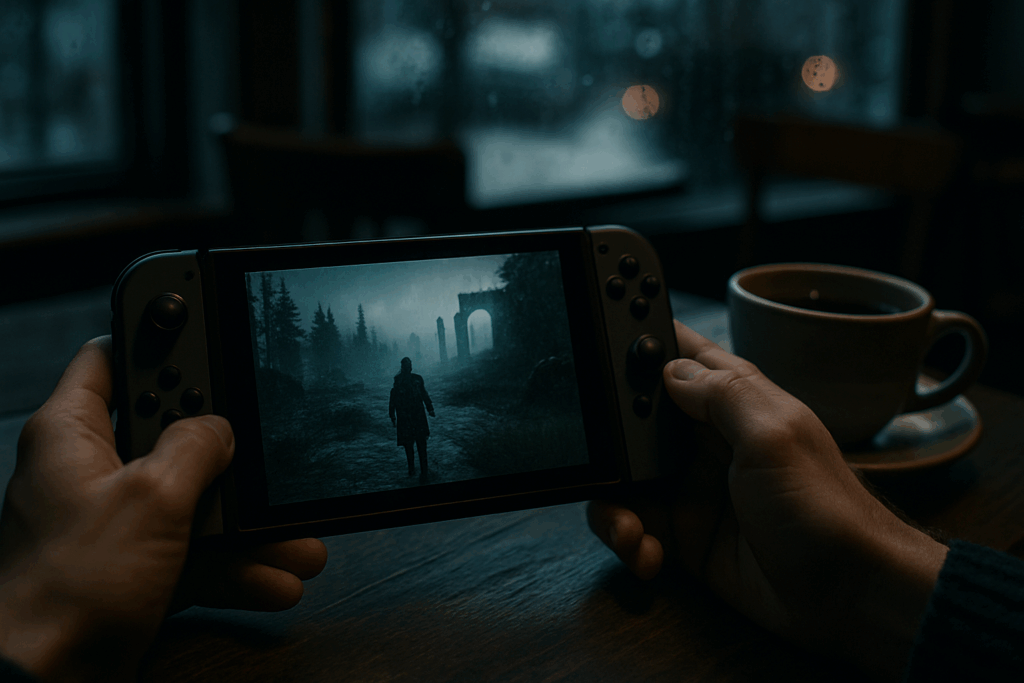Breaking the Mold of Open World Fatigue
Most open world games followed a playbook: big maps stacked with icons, quest markers, “go here, do this” commands. You’d follow a breadcrumb trail from one fetch quest to another. Progression was usually tied to zones or levels, locking you into a predetermined path. Safe? Sure. Exciting? Not really. Players got wise to the formula and bored.
Elden Ring didn’t just toss out the rulebook, it shredded it. Instead of leading players by the nose, it embraced freedom. There were no glowing markers or mini map clutter. The real guide? Curiosity. If you saw a castle in the distance, you could ride straight toward it. And maybe you weren’t ready. Maybe you got wrecked. But that discovery belonged to you. It created a stronger bond with the world one you carved out for yourself, not one dictated by a checklist.
Where other games filled space for the sake of it, Elden Ring embraced silence, scale, and suggestion. Its “emptiness” wasn’t lazy it invited questions. That tree on the horizon? That cave in the cliff? Maybe something was there. Maybe not. Half the magic was not knowing.
The non linear story backed it all up. Big beats happened based on exploration, not schedule. The narrative unfolded like a puzzle scattered across the land, waiting to be pieced together. It wasn’t cinematic in the traditional sense it was lived. That’s what made it immersive. It trusted players to find their own way, and in doing so, rewrote what exploration could feel like.
And that’s how Elden Ring broke the cycle: less noise, more wonder.
Level Design That Leads Without Telling
FromSoftware didn’t leave breadcrumbs. It left bones, ruins, and instinct. In Elden Ring, there’s no quest log nagging you to fetch this or kill that. You learn by looking, listening, and wandering. The world itself is the guide an old trail of torches, a ruin just visible through the trees, a pair of enemies standing alert near a cliff edge. Every detail suggests something, and that quiet suggestion is more powerful than any blinking map icon.
That’s what made players feel sharp. Not handheld, not herded just dropped into a living, breathing continent and trusted to figure things out. And when they did, the payoff was self earned. That creates a kind of loyalty most open world games only dream of.
Legacy dungeons and the connected world added a rhythm you don’t usually find in open design. Biomes weren’t just painted layers of fog or snow they held completely different rules and landmarks. You weren’t just on a new tile; you were in a new fable.
Then there’s the verticality. Caverns below castles. Treetops above cities. Platforms built into cliff faces. Nothing flat, nothing predictable. The world bent in every direction, and every direction dared you to test it. Few games have done it with that much confidence and with that little explanation.
Trusting the Player And Raising the Bar

Elden Ring made a call most big budget games won’t dare: no difficulty sliders. No “easy,” “normal,” or “hard” to scroll through. Just one world, and you step into it as is. It’s not about punishing the player it’s about trusting them. In doing so, FromSoftware raised expectations for what it means to grow through a game, not just win one.
The real test isn’t twitch reflexes or combat mastery. It’s patience. Observation. Willingness to learn through loss. Elden Ring asks you to pay attention. Enemy patterns, level design, the subtle breadcrumbs of environmental storytelling they all matter. If you can read the world, you have a fighting chance.
And that’s where player agency kicks in. Build paths actually shift your relationship with the game. Want to be a glass cannon mage? Go for it. Prefer a tank with a giant shield and near zero mobility? That’s viable, too. No path is wrong, just different. Builds aren’t just cosmetic they’re strategic.
This philosophy hit the industry hard. More devs are rethinking how they gate content. Maybe you don’t need to tune difficulty if your systems are flexible. More players now expect creative freedom and respect. Elden Ring didn’t hold your hand it gave you the tools and dared you to find your way.
A Benchmark for Emerging RPG Worlds
Elden Ring didn’t just reset expectations it challenged assumptions. One major shift? Developers are now taking a hard look at overloaded UIs and rigid leveling paths. The days of screen cluttered HUDs and pinging quest markers are starting to feel dated. Instead, the focus is swinging back to minimal design that serves the world, not the other way around. Elden Ring trusted players to find their own way. That trust is now influencing design choices across the genre.
Take Baldur’s Gate 3, where narrative weight and player driven choices anchor the experience. It doesn’t funnel you through content it lets you roam, adapt, screw up, and thrive. Starfield, on the other hand, has sparked debate. Some hail its massive scope, others criticize its reliance on checklists and segmented exploration. Fans and devs alike are asking the same question: are we building worlds to discover, or games to complete?
The bar has moved. Design first thinking is gaining traction again where lore, spatial storytelling, and environmental hints matter more than tutorial screens and breadcrumb trails. This isn’t about nostalgia. It’s about giving players room to connect the dots themselves.
Want to go deeper? Check out this breakdown: Baldur’s Gate 3 vs. Starfield.
What the Industry Learned from Elden Ring
Elden Ring proved something the industry had forgotten: open world games don’t need to be massive to be meaningful. Size isn’t the selling point it’s texture. It’s the way the wind shifts in Limgrave’s fields, the silence before a dragon lands, or that chilling moment you realize you’re in over your head in Caelid. This isn’t about packing every corner with side quests or lore dumps. It’s about giving space room to breathe.
The game’s restraint is its secret weapon. Elden Ring trusts players to find their own rhythm. It doesn’t try to fill every silence or explain every mystery. Instead, it leans hard into solitude and the power of being lost and in doing so, it makes discovery feel earned.
As we move through 2026 and more developers chase that same spark, we’re seeing echoes of this DNA. Games are moving away from overdesign and toward grounded spaces with weight and memory. The goal now isn’t to overwhelm the player it’s to invite them to explore something that feels alive, even when nothing is happening. Elden Ring didn’t just redefine scale it reminded us why we fell in love with open worlds in the first place.
